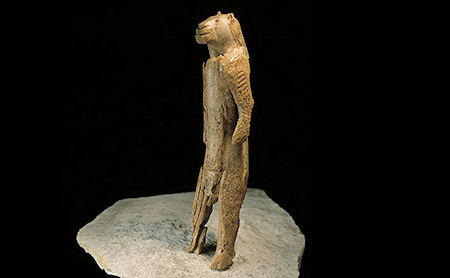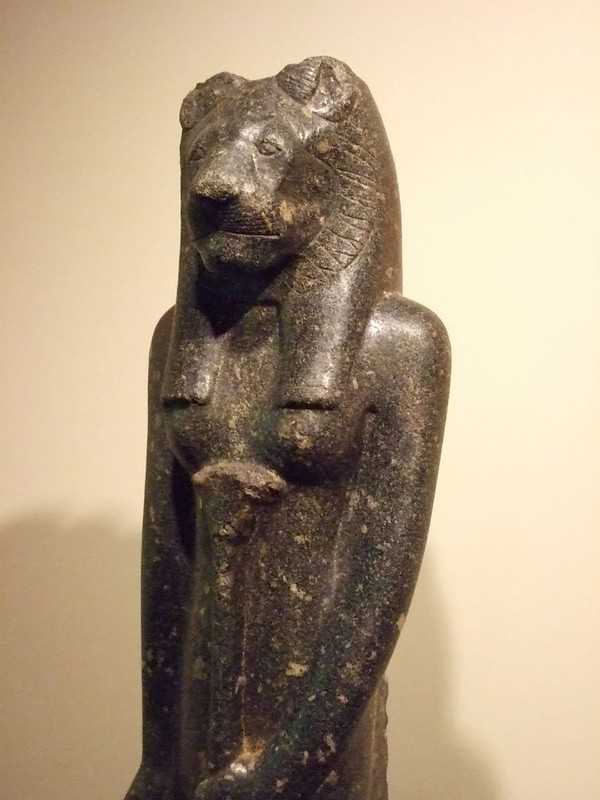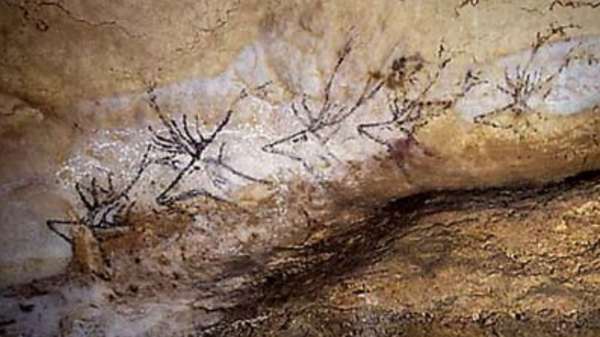The Maslow pyramid – a tragic misunderstanding of a good idea
Everybody has probably met more than once in their life the so-called Maslow pyramid. In 1943, psychologist Abraham Maslow had published the article “A Theory of Human Motivation” in which he proposed a typology of basic human needs. His theory was soon illustrated in a pyramid of human needs that gave the impression of a fixed sequence of need satisfaction (this was not done by Maslow himself). This pyramid insinuates a clear order of things. Only when we have sufficient food, we think about shelter and once we found shelter in the cave, psychological needs are activated: we want to belong to a group, and feel self-esteem. Finally, when all those basic and psychological needs are fulfilled, we become creative and devote our energy to self-actualization. Put differently, we first hunt, barricade the cave, and socialize and only afterwards we can become artists and storytellers. Such a sequence of needs is also expressed in playwright Bertolt Brecht’s saying, “Food comes first and then morality.” Higher needs are a kind of luxury. Nothing could be further from the truth.
This Photo by Unknown Author is licensed under CC BY-SA
The little statue in the cave
In 1939, Robert Wetzel, a professor of anatomy at Tübingen University and geologist Otto Völzing discovered a little figurine in the Palaeolithic cave site Hohlenstein-Stadel in South Germany. The statue was broken in many pieces, and they put it in a box, where it was forgotten. Only 30 years later in 1969, archeologist Joachim Hahn opened it and put the pieces together like in a three-dimensional puzzle. The statue represents a human being with the head of a cave lion and was called Löwenmensch (Lionman). It is 30 cm high, made of ivory and is estimated to be about 40.000 years old.

This Photo by Unknown Author is licensed under CC BY-NC-ND
Experts assume that homo sapiens arrived in Europe about 45.000 years ago under the hostile conditions of the Ice Age that lasted until roughly 19.000 years ago. Lionman was thus created during this rough and brutally cold period in which our ancestors were under the constant pressure to find sufficient food and shelter. Experimental archeologists who wanted to find out what it took to produce the statue, reproduced a copy of Lionman and realized that it would take an experienced artist about 400 hours to create it – this is nothing someone would do in the evening around the fire as a kind of “after-hunt hobby.” It required the impressive technical skills and the time investment of someone who devoted his or her energy to the creation of art, not the gathering of food. A professional artist.
History repeating itself
Lionman is the first known statue representing an imaginary creature. The figurine was found deep in the Hohlenstein-Stadel cave and close to a niche in the wall as if our ancestors had provided a special place to it. Lionman’s mouth was polished, it must have been touched very often. Probably in a ritual practice. It had seeds of flowers in its mouth – another indicator of some rituals. Archeologist are convinced that the cave represented a spiritual place in which these early hunters and gatherers venerated the Lionman. Was it meant to represent a human morphing into an animal? Transferring the power of the lion to a human being? A sacred entrance into a spiritual world? Did it maybe represent the Shaman him- or herself and their magic power to enter the non-human world? Was it meant to pacify and control nature? We will never know what Lionman was supposed to be or to do. What we do know, however is that this idea came up again in human history, remote in the time and place from where Lionman was found. Sekmeth was the Goddess of war, protection from diseases and of healing in Egypt around 1390 BC. Vishnu, one of the principal deities of Hinduism, is the God who brings order into chaos (around 400). Both are represented as half (wo)man, half lion.


The power of the story
Our ancestors who created and worshipped Lionman had a fully modern human mind. They were like us, and they were probably driven by the same questions our species has tried to answer over the Millenia that followed: Who are we? Where do we come from? Where do we go when we die? What shall we do? How should we live together? Most probably, Lionman and the story a community were sharing around this figurine in South Germany gave them some answers that reassured them, it provided orientation and social cohesion. They embedded their values and beliefs in a story as we do today and that story was obviously as important as the food they needed to find every day to survive. Homo sapiens is hardwired for stories. The need for a story came in parallel to the food and shelter, not afterwards.
Close to Hohlenstein-Stadel archeologists found three more caves from the same period: Geißenklösterle, Vogelherd and Hohle Fels. In all of those caves, they discovered some musical instruments, in particular some flutes, made of bird bones and also of ivory like Lionman. We must imagine the rituals around Lionman being accompanied by music, by singing and dancing. Members of the Lionman community were probably telling their stories as we know it from Ancient Greece: With the rhythm of their voice and their entire body and with the conviction that words are not just words. They were supposed to have magic power. “Abracadabra”, is an incantation which means “I create as I speak” in Aramaic. Speaking it or writing it on an amulet was supposed to do something in the real world. In Wilhelm Hauff’s fairy tale “Caliph Stork”, a wizard helps the powerful Caliph Chasid of Bagdad to morph into a stork and to understand the language of animals. “Mutabor” is the magic word, he needs to speak to morph into the animal and back into a human being. When he forgets this word, he is condemned to remain a stork.
Metamorphosis and the counterfactual imagination of homo sapiens
Metamorphosis understood as the power to transform has accompanied us as a species since then. Think about the book the famous Roman poet Ovid wrote with this very same title, in which Gods and humans move in and out of shapes of other creatures. Think about the dream of the Alchemist in the Renaissance who desperately tried to transform ordinary metals into gold. Or Franz Kafka’s novel Metamorphosis (“Die Verwandlung”), in which the poor salesman Gregor Samsa one morning wakes up as a huge insect. The transformation is a key element in our human imaginaries, a driving force of our creativity. The wings to fly first appear in myths, then in Da Vinci’s sketches before we eventually learned to build airplanes. Metamorphosis represents our amazing ability to imagine what is not there. To transcend the status quo, to dream of something we want to achieve. Counterfactual thinking is the magic of human progress. We make sense of the world in imaginaries.
Like the fire was warming up the bodies of our ancestors and made their food more digestible, so did stories warm them up from inside. Carving those stories in bones and stones and painting them on cave walls (and probably not only there but outside such closed environments, it hardly survived), they tried to bring those stories to life. With little oil lamps, the paintings on the wall turned into a movie. The swimming deer that can be found at the walls of the Lascaux cave and which date back about 15.000 years might just be one single animal. Moving the spotlight of their oil lamps in the dark cave from one to the other, the Shaman could create movement like children do with a flip book.

This Photo by Unknown Author is licensed under CC BY-SA
Narratives shape societies and conflicts between them
Over the Millenia, homo sapiens has constantly changed the answers they gave to the very same existential questions about our origin, future and the appropriate behavior. They did, however, always package those answers in stories. Stories, which formed complex narratives. Lionman does not speak to us anymore, but it had beyond any doubt the same impact on the group that used it as our belief in scientific progress or God or free markets have on us.
Samuel Huntington once argued that in the 20th century wars resulted from clashes of ideologies while in the future, we will fight along cultural fraction points. This might be the case or not, what is important to understand is that all those fights have something in common. They are narrative clashes. Homo sapiens has always fought for food, for scarce resources, but they also fought over narratives. Language is the interface between us and the world. It is the closest we can get to the real thing. The world changes, when the stories change and civilizations end, when the storyworlds they created disappear. At the beginning of the 21st century, our ecological crisis is in reality a storytelling crisis.
References:
Floss, Harald, 2015. The Oldest Portable Art: the Aurignacian Ivory Figurines from the Swabian Jura (Southwest Germany). Palethnologie, 7. Accessed at: https://journals.openedition.org/palethnologie/888#tocto1n8
Fu, Qiaomei et al. 2016. The genetic history of Ice Age Europe. Nature (534): 200–205.
Walter, Chip, 2015. First Artists. National Geographic Magazine, January issue. Accessed at https://www.nationalgeographic.com/magazine/article/origins-of-art